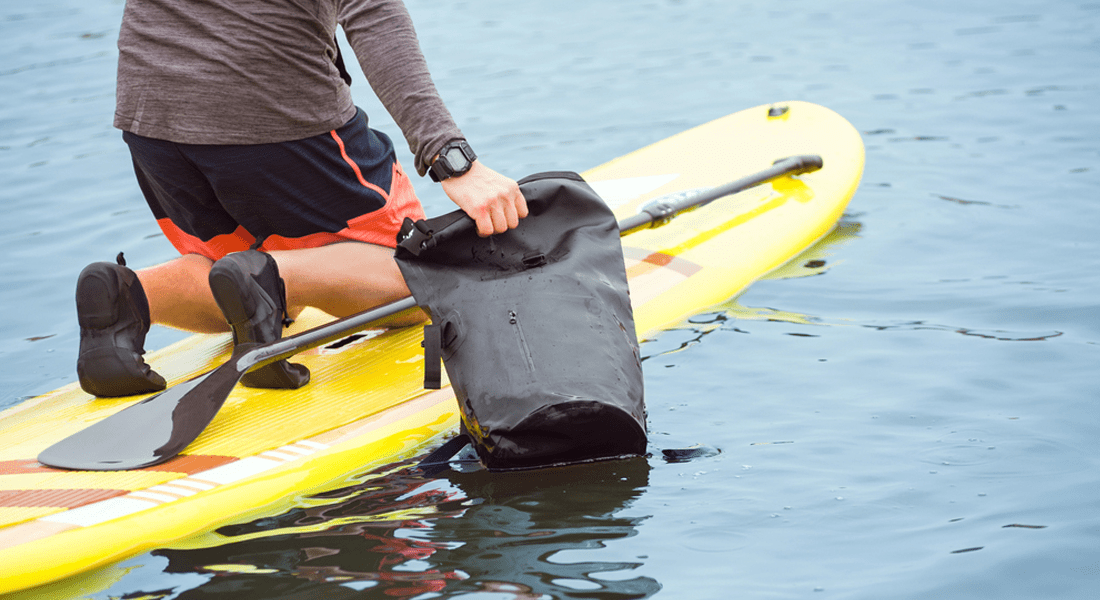



How To Do Turtle Roll Like A Pro Surfer
Whitewater waves can challenge even experienced surfers, especially those on longboards or foamboards. These boards offer excellent buoyancy, but their size makes traditional "duck diving" ineffective. The Turtle Roll, or "Eskimo Roll," is an important technique for managing powerful whitewater waves and keeping control of your surfboard. For those serious about improving their skills in turtle surfing, understanding this method is a game-changer.
Why You Need the Turtle Roll
When a large wave breaks into whitewater, it produces immense force. Surfers on longboards must navigate through this energy to avoid being pushed back. Punching through is rarely effective with high-flotation boards. The Turtle Roll helps you use the board’s buoyancy to your advantage, protecting you from the wave’s power and positioning you for your next move.
Mastering this technique is not only about keeping your position in the lineup. It also teaches better ocean awareness and helps refine your balance and timing.
Understanding the Basics of Turtle Surfing
Turtle surfing requires more than flipping your board over. Every step plays a role in making sure your board stays secure and you conserve energy. Timing, positioning, and control are fundamental. A small error, like flipping too early or being at an angle, can disrupt your rhythm and force you to start over.
Key factors include:
- Proper body and board alignment.
- Timing your flip before the whitewater hits.
- Keeping your arms relaxed yet stable while submerged.
Each step builds on the last, making this technique a powerful skill for surfers of all levels.
Preparation Is Key
Start by observing the ocean. Watch how waves break and time the sets. This will help you anticipate the whitewater. Avoid rushing into large sets. Instead, paddle during calmer periods when you can focus on practicing the roll.
Position your board perpendicular to the wave’s direction. This angle minimizes resistance and sets the foundation for a successful roll. Practice maintaining this alignment even when currents pull you off course.
Mastering the Flip
As the wave approaches, grab the board rails near your chest and take a deep breath. You should flip the board about six feet before the whitewater reaches you. When flipping, aim to keep the motion smooth and controlled.
Once underwater, make sure the surfboard’s nose is submerged. The board should be sealed to the water, creating resistance against the wave’s force. Keep your arms bent and relaxed. A rigid stance increases the likelihood of losing control.
Allow the wave to pass over you before flipping back. Rushing this step often leads to improper positioning and wasted energy.
Learn More About Us

Staying Perpendicular
Alignment is one of the most important aspects of the Turtle Roll. The surfboard must stay perpendicular to the wave at all times. Even a slight angle can expose the board’s side to the wave’s force. This can result in the board being pushed out of your hands or flipping uncontrollably.
Focus on maintaining a straight line as you resurface. This makes sure your position is ready for the next wave or maneuver.
Common Challenges and How To Address Them
Many beginners face challenges like flipping too soon or too late. Flipping too early allows currents to displace you. Waiting too long often leaves you mid-roll when the wave hits, which disrupts balance and pushes you back.
Another issue is stiffness. Keeping your arms too rigid while submerged prevents the necessary flexibility to absorb the wave’s energy. Bend your elbows slightly and focus on keeping your movements fluid.
Make sure your board’s nose stays underwater. A board with parts above the waterline loses its seal, making it prone to being pushed back.
Flipping Back Up
Once the wave has passed, it is time to return to the surface. This step requires precision and strength. Use your hands to pull one rail of the surfboard while pushing the other. The motion should flip the board right-side up. Kick your legs for extra support as you guide the board back into position.
Keep your movements controlled to prevent over-rotating or losing balance. As soon as you resurface, assess your position. If another wave is approaching, prepare to repeat the process. With practice, this transition becomes seamless, keeping you ready for anything the ocean brings.
Avoiding Common Mistakes
Even experienced surfers can make errors when executing the Turtle Roll. Understanding these pitfalls helps refine your technique:
- Not staying perpendicular: This is the most common mistake. If the board tilts even slightly, the wave’s force can knock it from your hands or push you backward.
- Failing to submerge the nose: A partially submerged board cannot create the necessary resistance, leading to a loss of control. Always make sure the nose is under the water during the roll.
- Flipping too early or too late: Flip just before the whitewater hits, around six feet from the wave. Too early, and you risk misalignment. Too late, and the wave may overpower you.
- Stiff arms: Keep your arms slightly bent. This position allows you to absorb the wave’s energy without losing grip.
Perfecting Your Technique
Turtle surfing is as much about timing as it is about technique. Take time to practice in smaller waves before tackling larger sets. Each session in the water builds muscle memory and confidence.
Focus on controlled, deliberate actions rather than rushing through the roll. With consistent practice, you will find a rhythm that works for you. Many surfers describe the Turtle Roll as a meditative process, one that aligns them with the ocean’s flow.
Benefits Beyond the Whitewater
The Turtle Roll is not just a practical skill; it is a foundation for becoming a better surfer. By mastering this technique, you gain a deeper understanding of wave dynamics and board control. It fosters confidence in challenging conditions, allowing you to enjoy your time in the water without fear of being pushed back by powerful waves.
Additionally, the Turtle Roll encourages mindfulness. Each step—paddling, flipping, and resurfacing—requires focus and awareness. This mental clarity often carries over into other aspects of surfing, making you more attuned to your environment and your body.
Learn With Ohana Surf Project
At Ohana Surf Project, we understand that mastering techniques like the Turtle Roll is key to navigating whitewater waves and building your confidence in the ocean. Our lessons are designed to provide you with the skills and knowledge needed to stay in control, from paddling and flipping to resurfacing with precision.
Our professional instructors guide you step-by-step, tailoring the experience to your unique needs. Whether you're a beginner learning the basics or an intermediate surfer refining your technique, we create a supportive environment where you can grow at your own pace. We also provide high-quality surfboard rentals and personalized coaching to help you tackle any challenge in the water.
Contact us today to book a lesson and discover how we can help you take your surfing skills to the next level. Join us in Waikiki and let’s make your time on the waves safe, rewarding, and unforgettable.
OTHER OSP BLOGS


What Size Waves Are Good For Bodyboarding?
Bodyboarding looks simple from shore, yet wave choice shapes how your session feels from the first paddle out. We hear visitors ask what size waves are good for bodyboarding because[...]
